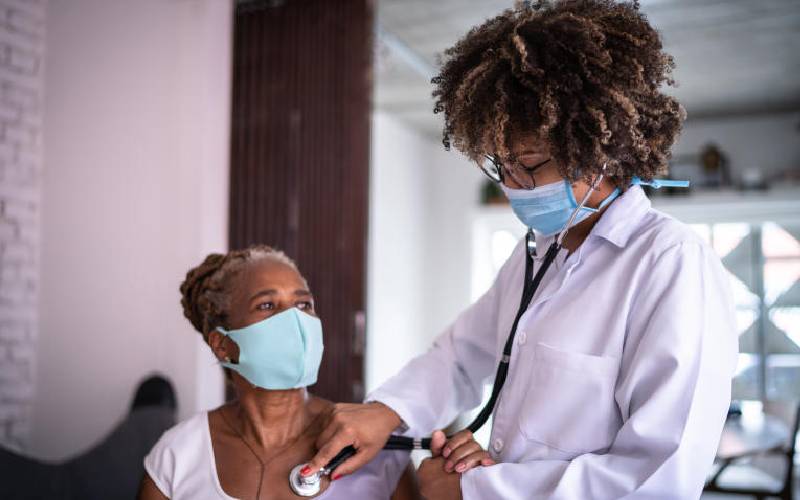
The main causes of diagnostic errors are lack of a systems approach to ensure diagnostic safety and quality. [Courtesy]
Diagnostic errors are common causes of wrong treatment, delayed treatment and poor health outcomes. But what are the issues surrounding diagnostic errors?
A laboratory diagnostic error is one where a wrong laboratory result is given to a patient. It can also be defined as a laboratory result that does not meet expectations in terms of accuracy, timeliness, interpretation, or does not reflect what is happening in the patient. A wrong result can be due to a mistake happening at the time of sample collection, during measurement of the sample, or when recording and communicating the patient’s result.
This can be life-threatening and applies to all diseases and conditions, not just Covid-19. As an example, about 30 percent of patients with TB are not diagnosed, contributing to the 1.5 million annual deaths globally. Treatment without a confirmed laboratory diagnosis can lead to unnecessary use of antibiotics and antimalarial medications.
There are also cases of people being wrongly diagnosed with HIV due to use of HIV test kits that have not been approved, or failure to follow recommended HIV testing protocols. In the absence of good laboratory diagnostics health-care providers rely on clinical judgement (syndromic diagnosis) an approach especially common at the primary healthcare level.
Syndromic diagnosis and treatment is dangerous as it assumes that diseases always present with very specific symptoms. For example, not everyone who presents with headache, fever, and joint pains has malaria or typhoid. We know that even a common cold or flu can have these symptoms. It is therefore very important that healthcare workers try and confirm their clinical suspicion with an appropriate diagnostic test.
How different is a misdiagnosis from an incomplete diagnosis? A misdiagnosis is a wrong diagnosis that does not correlate with a patient’s clinical condition. A 2020 study from Mozambique showed that, in 35 (38 percent) of 91 maternal deaths, there was a clinical misdiagnosis especially in the detection of pregnancy-related infections which if diagnosed in time with the appropriate laboratory tests could have saved the mother’s life.
An incomplete diagnosis is where additional tests that could impact on treatment decisions are not performed. A good example is the diagnosis of breast cancer which in itself is of no value to the treating oncologist without additional tests for special tissue markers that determine whether a patient will be eligible for chemotherapy, specialised targeted therapy or only hormone therapy.
The main causes of diagnostic errors are lack of a systems approach to ensure diagnostic safety and quality can result in patient harm and wasting of resources. A systems approach involves quality improvement processes that ensure equipment, staff and laboratory procedures are of the highest quality from the time of requisition of a test, to proper sample collection, sample transport, sample processing, analysis, reporting of results, and dissemination of that result to the appropriate physician in a timely manner. A breakdown in any of the above processes can cause diagnostic errors. However, studies have shown that the pre-analytic procedures (requisition of a test, sample collection, sample transport) which occur mostly outside the laboratory are the main cause of diagnostic errors in more than 70 percent of cases.
A national regulatory framework that addresses safety and quality is essential. New diagnostic tools/ equipment and test assays should be validated against a gold standard and its use appropriately regulated. Quality service implementation will require that the laboratory adheres to quality standards. Regulatory authorities should also make it mandatory that each laboratory should be accredited for all the tests it performs and that staffers have requisite professional qualifications and competencies.
Thus in Kenya, for example, we need to enforce our governance and regulatory framework for laboratories and as an integral part of any universal health coverage programme to achieve the third goal of Sustainable Development Goals (SDG).
For hospitals to ensure quality in their diagnostic process, quality standards and accreditation, laboratories should benchmark their performance against that of peers by enrolling for External Quality Assurance (EQA) programmes that can be sustained in limited-resource settings.
Digital pathology involves taking photos or scanning physical slides used to diagnose disease conditions in a laboratory and sharing them using special software or even mobile apps like WhatsApp. This enables sharing of a critical human resource and can help provide a much needed diagnostic service to remote and marginalized regions and also help to archive these slides for educational and training purposes. Digital pathology can be integrated with artificial intelligence which basically automates the process of reviewing slides by using special software to identify abnormal cells and patterns on an image and come up with a provisional diagnosis.
The development of novel technology such as Digital pathology and Artificial intelligence has shown a potential to be transformative in the practice of Pathology and Laboratory Medicine and can address this shortage of skilled workforce.
Dr Shahin Sayed is chair, Department of Pathology and Anatomic Pathologist while Dr Geoffrey Omuse and Dr Daniel Maina are Clinical Pathologists at Aga Khan University Hospital, Nairobi.
@AKUHNairobi
 The Standard Group Plc is a multi-media organization with investments in media platforms spanning newspaper print
operations, television, radio broadcasting, digital and online services. The Standard Group is recognized as a
leading multi-media house in Kenya with a key influence in matters of national and international interest.
The Standard Group Plc is a multi-media organization with investments in media platforms spanning newspaper print
operations, television, radio broadcasting, digital and online services. The Standard Group is recognized as a
leading multi-media house in Kenya with a key influence in matters of national and international interest.











